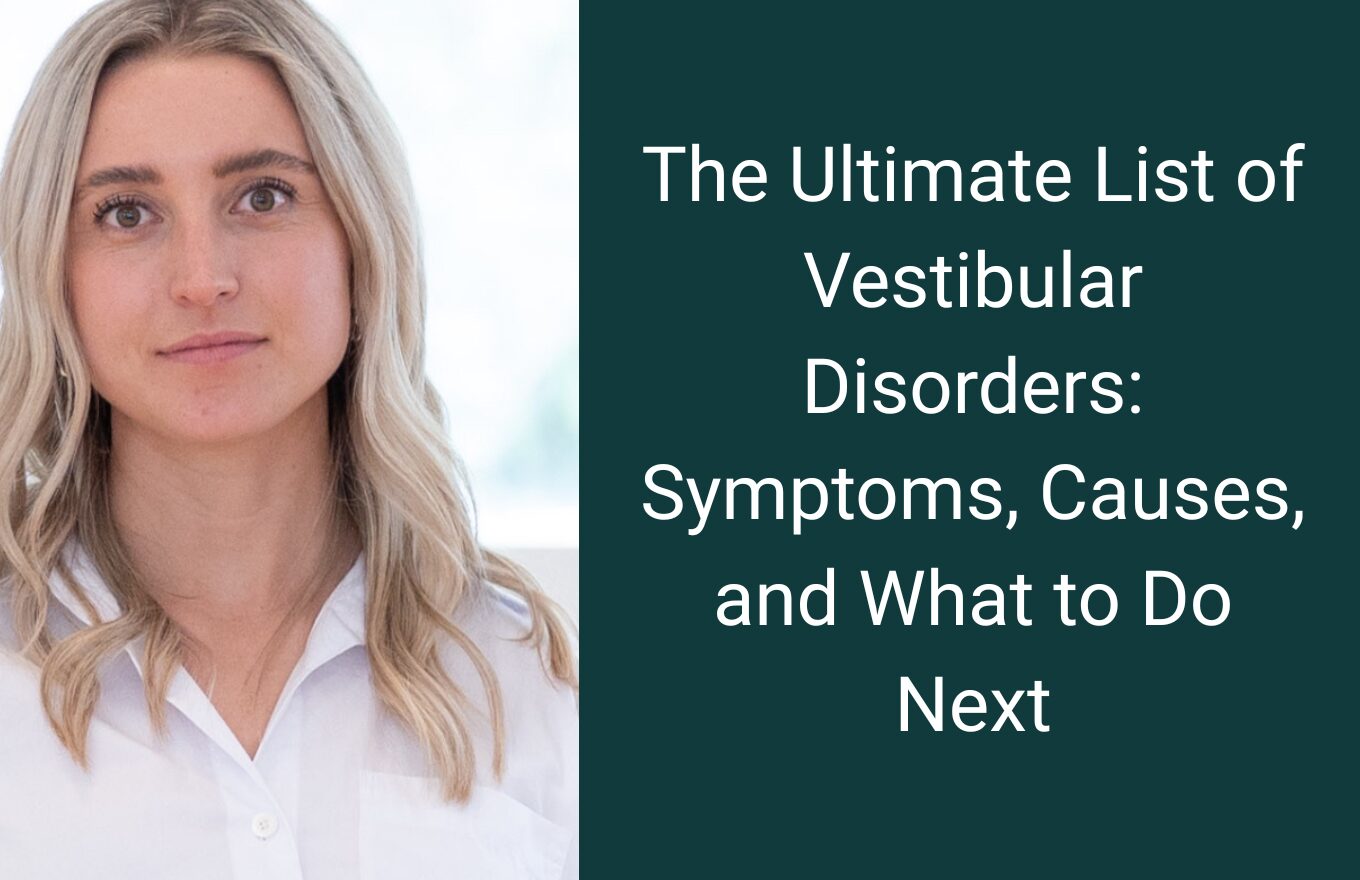If you live with vestibular migraine (VM), you know how unpredictable it can feel. One day you’re fine—and the next, dizziness, brain fog, and nausea hit out of nowhere. The truth is, vestibular migraine often has triggers, and once you identify yours, you can start to reduce flare-ups and regain control over your day-to-day life.
Here are five of the most common VM triggers we see in our Vestibular Group Fit community—and how to manage them.
1. Stress and Anxiety
Emotional stress is one of the most powerful vestibular migraine triggers. When your body’s stress response ramps up, it can alter blood flow to the brain, change hormone levels, and amplify sensitivity in your vestibular system. The first time many people experience vestibular migraine is after periods of prolonged stress. Stress can contribute to a number of health issues, so it’s important to get it under control. To learn more about how stress might be impacting your symptoms, you can listen to our podcast here.
Try this:
- Build in small moments of calm—like deep breathing, stretching, or a 5-minute mindfulness break.
- Schedule movement: regular gentle exercise (like the workouts in Vestibular Group Fit!) helps regulate your nervous system and reduce baseline stress.
- Practice saying “no” to overstimulation—your nervous system will thank you.
2. Hormone Fluctuations
Many people notice an increase in vestibular migraine episodes around their menstrual cycle, perimenopause, pregnancy, postpartum, and other hormone changes. Estrogen fluctuations can alter brain chemistry and make the vestibular system more sensitive. In Vestibular Group Fit, we have a whole module on hormones and VM during every stage of hormonal changes because this is so common!
Try this:
- Track your cycle alongside your symptoms to spot patterns.
- Talk to your doctor about options for stabilizing hormones if fluctuations are a major trigger.
- Focus on consistency—sleep, hydration, and nutrition all help buffer hormonal changes.
- Eat more cruciferous vegetables around your cycle
- Try seed cycling
3. Sleep Disruption
Too little sleep—or even too much—can throw off your brain’s pain and balance regulation systems. Inconsistent sleep schedules also increase fatigue and dizziness. Sleep is your body’s opportunity to detox, repair, and reset. If it’s interrupted, it can cause an increase in symptoms and make dizziness worse.
Try this:
- Aim for consistent sleep and wake times, even on weekends.
- Create a pre-bed routine to help your brain wind down (no screens for 30 minutes, dim lighting, gentle stretching).
- If sleep issues are chronic, consider a sleep study—sleep apnea and other disorders can worsen vestibular symptoms

4. Diet and Hydration
Blood sugar drops or spikes can trigger VM, which is why many people find their symptoms increase in the morning or evening. Most people also do not drink enough water during the day, causing dehydration which acts as another trigger. Certain foods may also trigger migraine attacks by affecting blood vessels or neurotransmitters. Some people find elimination diets to be helpful.
Try this:
- Keep a food and symptom journal for a few weeks.
- Don’t restrict everything—just look for patterns.
- Stay hydrated; dehydration alone can cause dizziness and headaches.
- Eat a balanced diet with plenty of protein, fiber, and healthy fats
5. Visual and Motion Stimuli
Scrolling on your phone, driving in heavy traffic, or even grocery shopping under fluorescent lights can trigger or worsen vestibular migraine symptoms. These environments challenge your already-sensitive vestibular system.
Try this:
- Take visual breaks during screen time.
- Wear sunglasses or a hat in visually busy environments.
- Practice graded exposure exercises to help your brain adapt over time (we walk you through these inside Vestibular Group Fit).
The Takeaway
While vestibular migraine triggers vary from person to person, understanding your unique combination is key. You can’t avoid everything—but you can build resilience and reduce sensitivity through consistent movement, symptom tracking, and nervous system regulation. You should not track symptoms forever for this can lead to hypervigilance. Here’s a YouTube video explaining more.
In Vestibular Group Fit we work to build you a bigger bucket so that triggers don’t impact you as much. By building more resilience, you will find that your triggers become smaller or even non-existent over time.
Ready to Take the Next Step Towards Healing?
If you’re looking for a supportive, expert-led space to help you regain confidence, reduce symptoms, and rebuild your life after a vestibular diagnosis, join us in Vestibular Group Fit.
This unique coaching program combines movement, education, nervous system retraining, and community — all designed specifically for people living with vestibular disorders. Whether you’re newly diagnosed or have been struggling for years, you are not alone and you can feel better.
👉Click here to join Vestibular Group Fit and starting your healing journey today.

Latest articles

5 Common Vestibular Migraine Triggers

The Ultimate List of Vestibular Disorders: Symptoms, Causes, and What to Do Next




